
Rhynchospora colorata, also known as starrush whitetop, white star sedge and white-topped sedge, is a perennial sedge with white bracts, giving it the appearance of white petals with long, green points. It is native to southeastern North America, from Virginia west to New Mexico in the United States, and south into the Caribbean islands.

Rhynchospora is a genus of about 400 species of sedges with a cosmopolitan distribution. The genus includes both annual and perennial species, mostly with erect 3-sided stems and 3-ranked leaves. The achenes bear a beak-like tubercule and are sometimes subtended by bristles. Many of the species are similar in vegetative appearance, and mature fruits are needed to make a positive identification.

Fritillaria biflora, the chocolate lily or mission bells, is a species of fritillary native to western California, US, and northern Baja California, Mexico. It occurs in the chaparral and woodlands ecoregion, often in serpentine soil formations and hillside grassland habitats.

Tiedemannia canbyi is a rare species of flowering plant in the carrot family known as Canby's dropwort and Canby's cowbane. It is native to the southeastern United States, where it occurs on the Atlantic coastal plain from North Carolina to Georgia, as well as the Chesapeake Bay area. It is threatened by the loss of the wetland habitat in which it grows. It is a federally listed endangered species of the United States.

Melanthera biflora also known as sea daisy, beach daisy and sea ox-eye, is a species of flowering plant in the family Asteraceae. It is a scandent, rough-looking and fast-growing plant with a wide distribution.
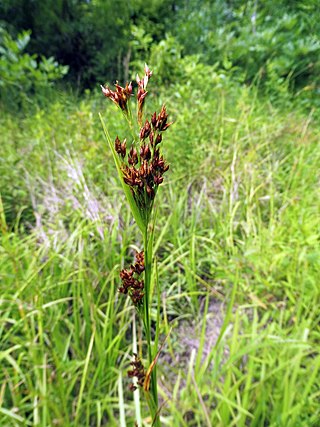
Rhynchospora caduca, commonly called anglestem beaksedge, is a species of flowering plant in the sedge family (Cyperaceae). It is native to North America, where it is found in the southeastern United States. Its typical natural habitat is in low, wet areas, such as in marshes, seeps, tidal swamps, pine savannas, and flatwoods.
Hypericum harperi, the sharplobe St. Johnswort or Harper's St. John's wort, is a perennial flowering plant in the family Hypericaceae. It is an aquatic herb native to southeast North America. H. harperi has a diploid chromosome number of 24.

Rhynchospora corymbosa, known by the common names of golden beaksedge and matamat, is a member of the sedge family, Cyperaceae. It is a perennial herb, found globally throughout the tropics. It grows up to 2 meters tall in riverbanks, shallow pools, and swamps.

Rhynchospora rugosa, known by the common name of claybank beaksedge, is a member of the sedge family, Cyperaceae. It is a perennial herb, native to Central and South America.
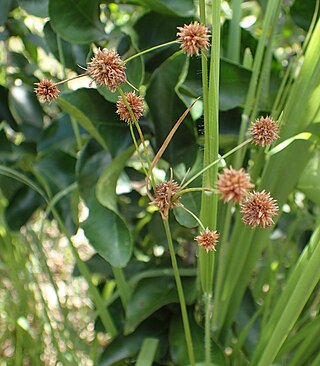
Rhynchospora holoschoenoides, known by the common name of fly beaksedge, is a member of the sedge family, Cyperaceae. It is a perennial herb, found throughout the Caribbean, Central and South America and western and southern Africa.
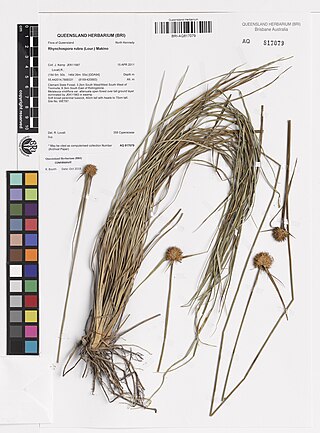
Rhynchospora rubra is a member of the sedge family, Cyperaceae. It found throughout southeast Asia, Oceania, and western and southern Africa.
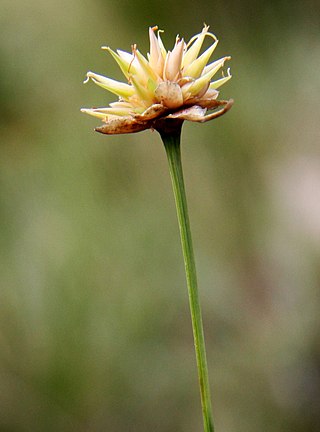
Rhynchospora globosa, known by the Spanish common name of estrellita de sabana, is a member of the sedge family, Cyperaceae. It is a perennial herb, found throughout the tropics of Central and South America. The variant R. globosa var. tenuifolia is endemic to Cuba.
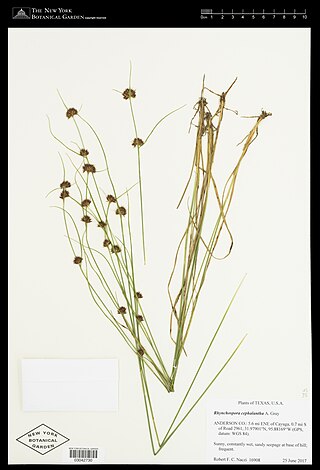
Rhynchospora cephalantha, known by the common name of bunched beaksedge, is a member of the sedge family, Cyperaceae. It is a perennial herb, found throughout the eastern United States, from New York to Texas.

Rhynchospora baldwinii, known by the common name of Baldwin's beaksedge, is a member of the sedge family, Cyperaceae. It is found in riverbanks and swampland near the coasts of the southeastern United States, as far west as New Orleans and as far north as Morehead City in North Carolina.

Rhynchospora careyana, known by the common name of broadfruit horned beaksedge, is a member of the sedge family, Cyperaceae. It is found in marshy areas near the Gulf coast of the southeastern United States, from western Louisiana to southeastern Georgia.
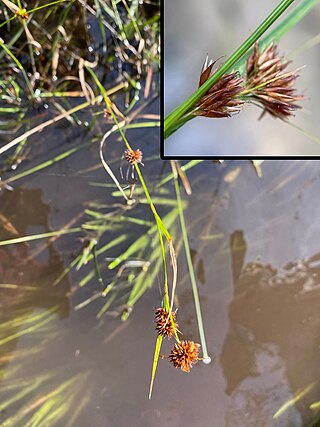
Rhynchospora chalarocephala, known by the common name of loosehead beaksedge, is a member of the sedge family, Cyperaceae. It is a perennial herb, found throughout the southeastern and Mid-Atlantic United States, from New Jersey to Texas.

Rhynchospora chapmanii, known by the common name of Chapman's beaksedge, is a member of the sedge family, Cyperaceae. It is a perennial herb, found in wetlands of the southeastern United States from North Carolina to Louisiana, as well as in Belize, Cuba, Honduras, and Nicaragua.

Rhynchospora berteroi, known by the common name of little beaksedge, is a member of the sedge family, Cyperaceae. It is a perennial herb, native to wetlands in the Caribbean islands and Belize, and also found in the southeastern United States.

Rhynchospora brachychaeta, known by the common name of West Indian beaksedge, is a member of the sedge family, Cyperaceae. It is a perennial herb, found in wetlands of the southeastern United States, the Caribbean, Central America, and Guyana.
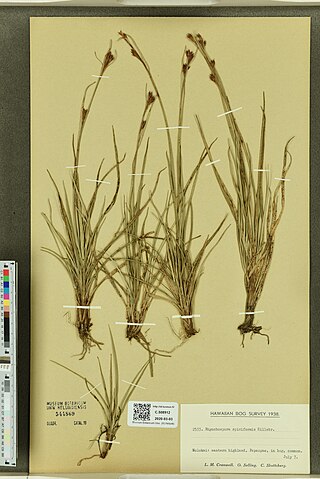
Rhynchospora chinensis, known by the common name of spiked beaksedge, is a member of the sedge family, Cyperaceae. It is a perennial herb, found in wetlands of Japan, Korea, eastern China, Mainland Southeast Asia, India, Australia, and Madagascar. It was once present in Sri Lanka, where it is now locally extinct. The subspecies R. chinensis subsp. spiciformis is endemic to Hawaii.



















